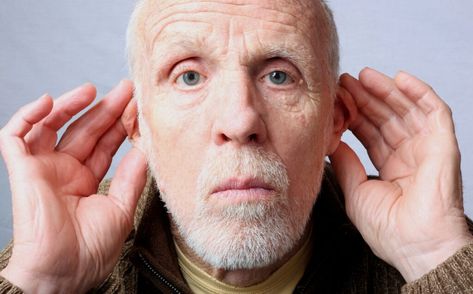両耳難聴は、両耳の聴力が低下する症状です。この難聴は日常生活に深刻な影響を与え、コミュニケーション、精神的健康、そして社会的な交流に支障をきたす可能性があります。この記事では、両耳難聴について包括的な概要を説明し、その原因、症状、ICD-10の分類、退役軍人に対するVA(退役軍人省)の等級、そして治療法について解説します。この症状について初めて知った方でも、積極的に解決策を探している方でも、両耳難聴を理解することは、効果的な管理に不可欠です。
🚀 この投稿をナビゲート
以下もご興味があるかもしれません:
パート 1: 両耳の難聴とは何ですか?
両耳難聴は、両耳に聴覚障害があることを指します。片耳のみに影響を及ぼす片耳難聴とは異なり、両耳難聴は、音源方向の判別が困難になったり、集団での会話や騒がしい環境での負担が増したりするなど、より顕著な問題を引き起こす可能性があります。このタイプの難聴の重症度は、軽度から重度まで様々で、あらゆる年齢層に影響を与える可能性があります。
パート2:両側難聴の種類

- 伝音性難聴:このタイプの難聴は、外耳または中耳の閉塞または損傷により、音が内耳に届かなくなるものです。一般的な原因としては、耳の感染症、閉塞、または耳の構造への物理的損傷などが挙げられます。伝音性難聴は、多くの場合、医療介入によって回復可能です。
- 感音難聴(SNHL) :これは両側性難聴の最も一般的な形態であり、内耳または聴神経の損傷によって発生します。両側性感音難聴は通常永続的であり、加齢、大きな音への曝露、または遺伝的要因に関連することがよくあります。
- 混合性難聴:このタイプの難聴は、伝音性難聴と感音性難聴が組み合わさったもので、外耳/中耳と内耳または聴神経の両方に影響を及ぼします。混合性難聴には複数の治療法が必要であり、管理がより複雑になる場合があります。
パート3:両側難聴のICD-10コード
ICD-10分類システムは、両耳難聴を含む病状の記録と診断に使用される世界標準です。適切な記録は、患者が適切な治療を受けられるようにし、保険手続きの効率化につながります。両耳難聴の一般的なICD-10コードには、以下のものがあります。
- H90.3 – 両側感音難聴: このコードは、難聴を引き起こす神経損傷または内耳の問題の場合に適用されます。
- H91.93 – 詳細不明の両側難聴: 難聴の具体的な種類が不明な場合に使用され、このコードにより診断の柔軟性が向上します。
両耳の難聴に適切なICD-10コードを特定することは、患者と医療提供者の両方にとって、正確な記録の保持と補聴器やセラピーなどの必要な治療へのアクセスを確保するのに役立ちます。聴覚に問題があり、さらに詳しい情報が必要な場合は、これらのコードについて医療提供者にご相談ください。
パート4:両耳難聴の症状と影響を認識する
両耳難聴の一般的な症状
両耳の難聴は、日常生活に影響を与えるいくつかの顕著な症状を引き起こします。
- 会話の理解が困難: 特に騒がしい環境では会話が聞き取りにくくなり、個々の単語を聞き取ることが困難になることがあります。
- 音源定位の低下: 両耳で聞くことで音源を特定できますが、両耳の聴力低下によりこの能力が損なわれ、空間認識に影響を及ぼします。
- 聞く努力の増加: 両耳の難聴は、音に集中するために多くのエネルギーを費やすため、聞き疲れにつながることがよくあります。
- 社会的撤退と孤立: 聴覚障害により社会的交流が困難になり、集まりを避けたり孤立感を感じたりする人もいます。
心理的および社会的影響
両耳の難聴を抱えて生活することは、精神的な負担となり、フラストレーションや、場合によってはうつ病につながることがあります。社会との関わりが減ると、精神的な健康にも影響が出る可能性があります。最新のCearvol補聴器は、高度な音声増幅技術とノイズ低減技術を備えており、大切な人との繋がりを取り戻し、孤独感を軽減するのに役立ちます。
パート5:両側難聴に対するVA評価
退役軍人の方は、両耳の難聴に対してVA(退役軍人省)による等級認定を受けることができ、症状の重症度に基づいて障害補償が受けられます。米国退役軍人省(VA)は、聴力検査を用いて難聴を評価し、補償や給付金の受給に影響する障害等級を決定します。
資格要件を満たす退役軍人は、様々な周波数の音を聞き取る能力に基づいてVA(退役軍人省)による評価を受けます。この評価は、補聴器やその他の補助器具など、利用可能な財政支援やリソースのレベルを決定するため、非常に重要です。両側感音難聴を抱える退役軍人は、VAの支援制度の恩恵を受けることができ、包括的なケアを通じて生活の質を向上させることができます。
パート6:両耳の難聴に対する効果的な治療法
両耳の難聴は、個人のニーズや聴力レベルに合わせて調整されたさまざまな治療法で管理できます。
1. 補聴器
両耳の難聴の方にとって、補聴器は必要不可欠で、手軽に購入できる選択肢です。補聴器は音を増幅し、背景ノイズを低減し、社交の場での会話をより明瞭にします。Cearvol 補聴器はアプリでカスタマイズ可能な調整機能を備えており、ユーザーは個人のニーズや様々な環境に合わせて設定を微調整できます。ただし、この市販の補聴器は軽度から中等度の難聴にのみ対応しているため、購入前に難聴の程度を確認することをお勧めします。
両耳難聴に対するCearvol補聴器の利点
- 指向性マイク: 前方からの音を捉えることにより、Cearvol 補聴器は騒がしい環境でも会話に集中するのに役立ちます。
- ノイズ低減: Cearvol 補聴器は、特に混雑した環境でも明瞭度を向上させるために、高度なノイズ低減技術を使用します。
- 長いバッテリー寿命: 最大 12 時間の連続使用とバックアップ バッテリーにより、ユーザーは Cearvol 補聴器を一日中使用できます。

Diamond X1 - Bluetooth搭載の最高の補聴器
新人価格
249.99ドル309.99ドル
- ✔ クリアな聴覚を実現するアダプティブサウンド モード。
- ✔ 通話とストリーミング用の Bluetooth。
- ✔ アプリ制御のカスタマイズ可能な調整。
- ✔ 充電可能で急速充電。
- ✔ 軽度から中程度の難聴に最適です。
2. 人工内耳
従来の補聴器では対応できない重度の難聴の場合、人工内耳は聴神経を直接刺激することで代替手段となります。人工内耳は損傷した耳の構造を迂回するため、音を体験することができます。人工内耳は一般的に重度の難聴があり、外科手術が必要な方のみに使用されます。
3. 補聴補助装置(ALD)
補聴補助装置は、大規模な集会など、特定の環境における聴力を向上させることができます。これらの装置は補聴器と連携して動作し、重要な音を増幅し、背景ノイズを除去します。FMシステムとループシステムは、聴覚が困難な環境で追加のサポートを提供する一般的な2つのタイプです。
4. コミュニケーション戦略
機器以外にも、アイコンタクトを維持する、周囲の騒音を減らす、明るい場所に身を置くなど、コミュニケーションを改善するための実践的な方法があります。これらのテクニックは、両耳の難聴を持つ人にとって、社会的な交流をよりスムーズで楽しいものにします。
第7部:両耳の難聴とともに生きる
両耳の難聴に適応するには、忍耐、適切なツール、そして社会的なサポートが必要です。両耳の難聴を抱える多くの方は、高度なワイヤレスBluetooth補聴器とコミュニケーション技術を活用することで、音の明瞭度を高め、社会的な場で自信を取り戻すことができます。

さらに、警報システムなどの視覚的な補助手段は、音だけに頼ることなく日常生活をサポートできます。こうしたライフスタイルの調整は、人々がつながりを保ち、積極的に活動し続けることを助け、生活の質と精神的な健康を向上させます。
結論
両耳の難聴は、コミュニケーション能力と精神衛生に広範囲にわたる影響を及ぼす複雑な症状です。しかし、原因、症状、 ICD-10コード、退役軍人会(VA)による評価を理解することで、適切な治療法を見つけることができます。
両側性感音難聴でお悩みの方でも、ICD-10の信頼できるコード情報をお探しの方でも、ご自身の選択肢を十分に理解することが不可欠です。ご自身やご家族が両側性難聴の症状に悩まされている場合は、診断と治療の選択肢について医療従事者にご相談ください。Cearvol補聴器は、音の明瞭度を高め、日常生活の質を向上させる高度な技術を搭載しており、自信を持って楽に社交の場を過ごせるようお手伝いします。
難聴の症状について詳しくは、片側難聴のガイドをご覧ください。症状によって必要なアプローチは異なりますが、適切な解決策を見つけることで、充実した、つながりのある生活を送ることができます。




コメントを書く
全てのコメントは、掲載前にモデレートされます
このサイトはhCaptchaによって保護されており、hCaptchaプライバシーポリシーおよび利用規約が適用されます。